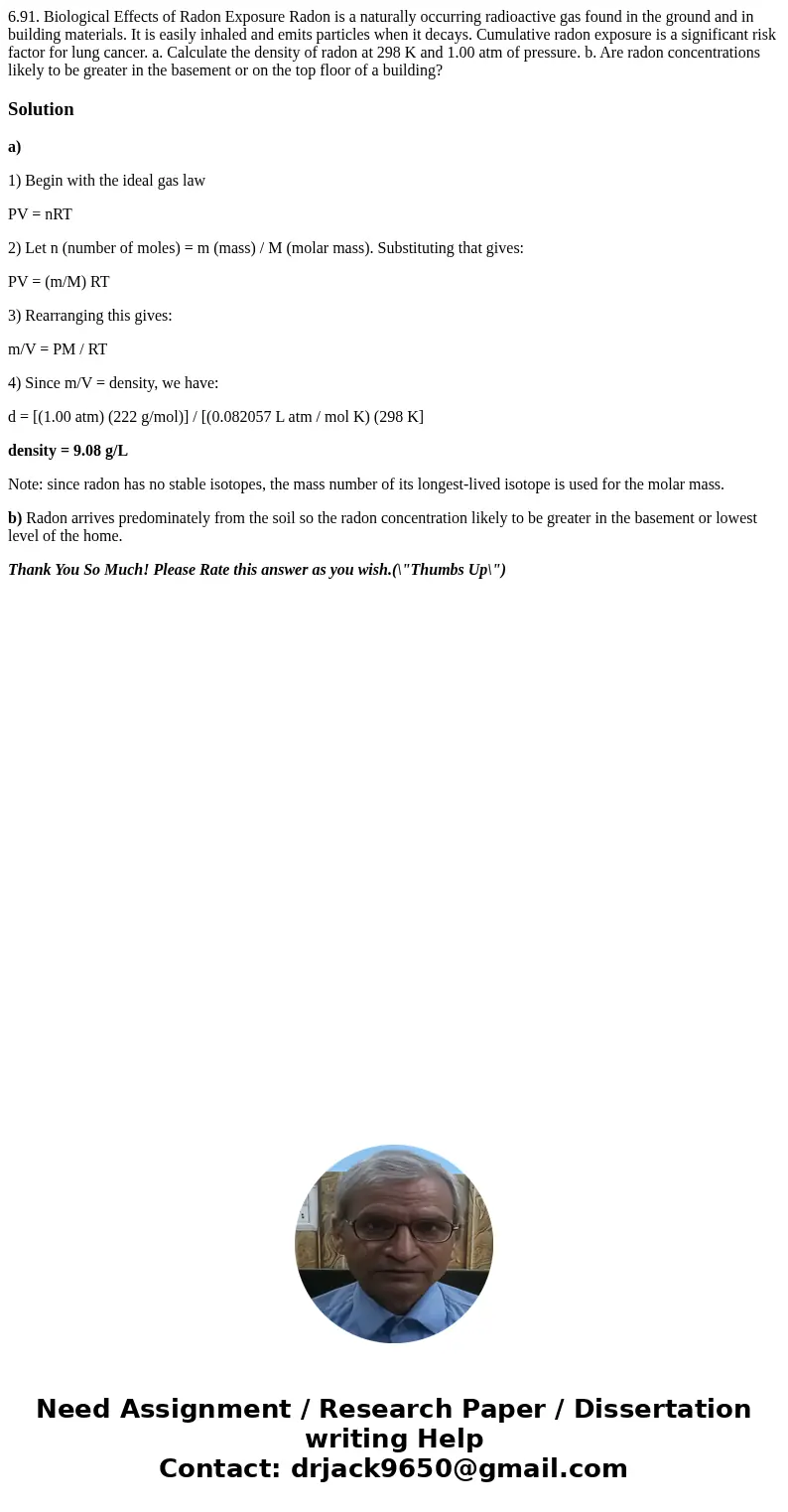691 Biological Effects of Radon Exposure Radon is a naturall
6.91. Biological Effects of Radon Exposure Radon is a naturally occurring radioactive gas found in the ground and in building materials. It is easily inhaled and emits particles when it decays. Cumulative radon exposure is a significant risk factor for lung cancer. a. Calculate the density of radon at 298 K and 1.00 atm of pressure. b. Are radon concentrations likely to be greater in the basement or on the top floor of a building? 
Solution
a)
1) Begin with the ideal gas law
PV = nRT
2) Let n (number of moles) = m (mass) / M (molar mass). Substituting that gives:
PV = (m/M) RT
3) Rearranging this gives:
m/V = PM / RT
4) Since m/V = density, we have:
d = [(1.00 atm) (222 g/mol)] / [(0.082057 L atm / mol K) (298 K]
density = 9.08 g/L
Note: since radon has no stable isotopes, the mass number of its longest-lived isotope is used for the molar mass.
b) Radon arrives predominately from the soil so the radon concentration likely to be greater in the basement or lowest level of the home.
Thank You So Much! Please Rate this answer as you wish.(\"Thumbs Up\")

 Homework Sourse
Homework Sourse